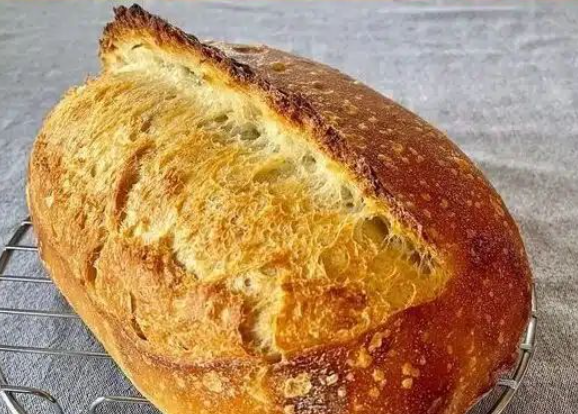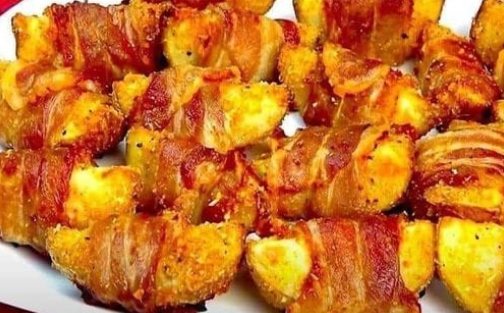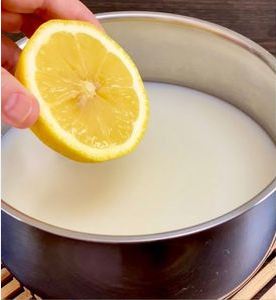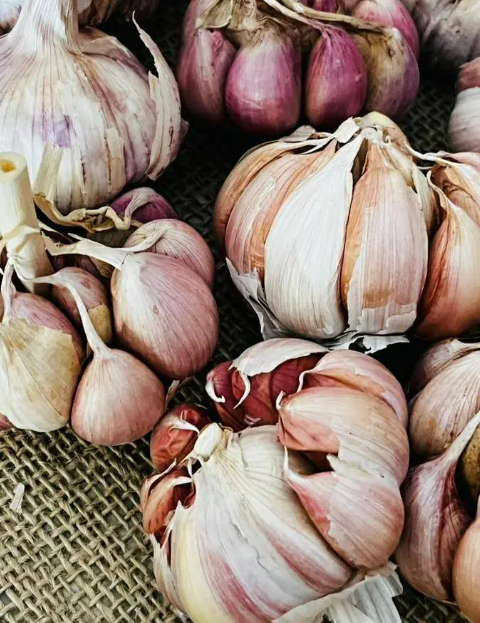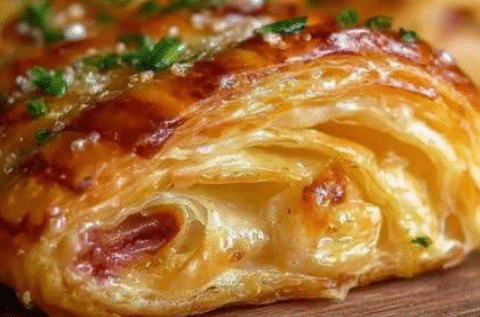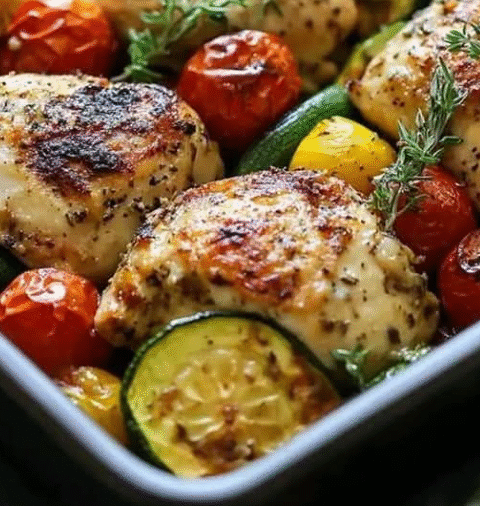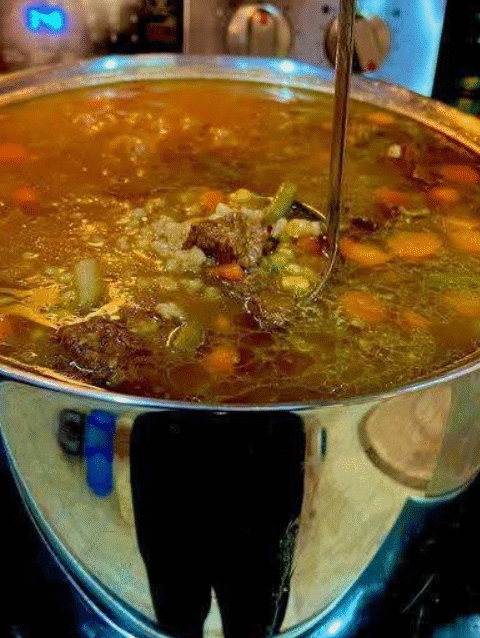Classic Homemade Bread: Simple, Soft, and Delicious
Few things are more comforting than the aroma of fresh bread baking in the oven. This Classic Homemade Bread recipe is your go-to guide for soft, fluffy, golden loaves with minimal effort and ingredients. Whether you’re a beginner baker or looking to return to the basics, this recipe brings the bakery home—warm, fragrant, and irresistibly good. 🍞
As Ree Drummond says, “There’s something magical about pulling a golden loaf out of your own oven. It feels like an accomplishment—and tastes like one too.”
Why You’ll Love This Bread
- Simple Ingredients: No special tools or flours required.
- Soft Texture: Perfectly fluffy with a tender crumb.
- Versatile Use: Ideal for sandwiches, toast, or pairing with soup.
Ingredients
Main Dough
- 10 grams (1 packet) dry yeast
- 200 ml warm water (≈ 1 glass)
- 720 grams (6 cups) all-purpose flour, plus
- 120 grams (1 cup) flour for initial mixing
- 10 grams (1 tsp) salt
For Brushing
- 1 egg yolk
- 1 tbsp milk
Step-by-Step Instructions
Step 1: Activate the Yeast
In a large bowl, dissolve the dry yeast in 200 ml of warm (not hot) water. Stir gently until dissolved.
Step 2: Start the Dough
Add 120 g (1 cup) of flour to the yeast mixture. Stir until smooth. Cover with a clean cloth and let rest for 15 minutes to begin fermentation.
Step 3: Build the Dough
Add 400 ml more warm water to the mixture. Stir, then gradually incorporate 720 g (6 cups) of flour and the salt. Mix until a sticky dough forms.
Step 4: Knead
Knead by hand or with a stand mixer for 3–4 minutes, until the dough is soft but not too sticky. Add a little extra flour if needed, but avoid over-kneading. 💪
Step 5: First Rise
Cover the dough with a towel and let it rise in a warm place until doubled in size—usually about 45–60 minutes.
Step 6: Shape & Second Rise
Gently deflate the dough and divide into two equal parts. Roll each into a ball and rest for 10 minutes.
Lightly flour your surface, flatten each dough with your fingers, then roll into a tight loaf. Place on a baking tray, cover, and let rest for 20 minutes.
Step 7: Brush & Bake
Preheat oven to 200°C (392°F). Mix egg yolk and milk. Brush this over the dough for a golden crust.
Bake for 25–30 minutes or until golden brown and hollow-sounding when tapped. Cool on a rack before slicing.
Pro Chef Tips & Safety Notes
- Water Temperature: Aim for 100–110°F (38–43°C) to activate yeast without killing it.
- Humidity Helps: Let dough rise in a warm, slightly humid place for best results.
- Don’t Over-Knead: Especially with all-purpose flour, gentle kneading yields softer bread.
- Storage: Keep cooled bread in a paper bag or cloth to preserve crust texture.
According to Chef Gordon Ramsay, “A well-made bread is like a handshake—it tells you everything about the baker. Texture, temperature, time. Don’t rush it.”
Nutritional Facts (Per Serving)
| Component | Amount |
|---|---|
| Calories | 150 |
| Total Fat | 1.5 g |
| Saturated Fat | 0.5 g |
| Cholesterol | 20 mg |
| Sodium | 300 mg |
| Total Carbohydrates | 30 g |
| Dietary Fiber | 1 g |
| Sugars | 1 g |
| Protein | 4 g |
Serving Ideas 🍽️
- With Soup: Serve alongside tomato basil or chicken noodle soup.
- Toast & Jam: Slice and toast for breakfast with butter and jam.
- Sandwich Base: Use for grilled cheese, BLT, or turkey club sandwiches.
Storage & Freezing
- Short-Term: Store at room temp in paper or cloth for up to 3 days.
- Freezer: Freeze in a resealable bag for up to 3 months. Thaw at room temp or reheat in oven at 325°F for 10 minutes.
10 FAQs About Homemade Bread
- Can I use whole wheat flour?
Yes, substitute up to 50% with whole wheat for a denser, nuttier loaf. - Why didn’t my bread rise?
Likely inactive yeast or water that was too hot/cold. Try fresh yeast and warm water (100–110°F). - How do I make the crust crispier?
Place a pan of water in the oven while baking or bake directly on a hot stone. - Can I add herbs or cheese?
Absolutely—add rosemary, garlic, cheddar, or olives into the dough before shaping. - Is kneading by hand okay?
Yes! Just knead until the dough is elastic and smooth—about 8–10 minutes. - How do I know when it’s done baking?
Tap the bottom—it should sound hollow. Internal temp should be around 190–200°F. - Can I double the recipe?
Yes, but be sure your mixer (or muscles) can handle it! - Do I need a bread pan?
No—this recipe works well as free-form loaves on a baking tray. - Why is my bread too dense?
Over-kneading, too much flour, or under-proofing may be to blame. Follow timing carefully. - Can I use instant yeast?
Yes! Skip the activation step and mix directly into the flour.
More Bread Recipes to Explore
- No-Knead Overnight Bread – a crusty loaf with zero kneading required.
- Cheddar Garlic Dinner Rolls – soft, cheesy, and ultra-satisfying.
- Sourdough Starter 101 – begin your fermentation journey at home.
Final Thoughts
This Classic Homemade Bread is all about simplicity, softness, and satisfaction. It’s beginner-friendly, endlessly customizable, and deeply rewarding. Whether slathered with butter or built into a gourmet sandwich, each slice speaks of care and craftsmanship.
As Chef Bobby Flay might say, “Real food starts with good bread. And nothing’s better than what you make yourself.”
So roll up your sleeves, warm up your oven, and enjoy the timeless joy of baking homemade bread—your kitchen (and your family) will thank you. 🥖
